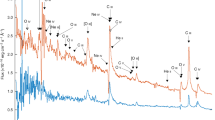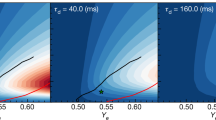Abstract
Hoyle and Fowler1 have suggested that type I supernovae are the result of an explosion following the ignition of degenerate nuclear fuel in an evolved star. The purpose of this communication is to place this idea within the context of current stellar evolutionary calculations and to examine the development of the instability. The growth of carbon–oxygen core as a result of helium shell burning in stars of intermediate mass has been studied by Hayashi, Hoshi and Sugimoto2,3, Kippenhahn, Thomas and Weigert4, and Weigert5. For a carbon–oxygen core of mass Mc ∼ 0.7 M⊙, these authors find that inclusion of energy loss by neutrino emission prevents the carbon flash from occurring, and that a cold degenerate core of potentially explosive carbon and oxygen slowly grows. If energy loss by neutrino emission is included, a carbon star cannot ignite by the 12C + 12C reaction if its mass is less than about 1 M⊙ (unpublished results of T. Murai, D. Sugimoto, R. Hoshi and C. Hayashi, and of G. Beaudet and E. E. Salpeter). This implies that all stars which have a less massive carbon–oxygen core at the onset of the helium shell burning stage will not ignite carbon burning by the comparatively gentle carbon flash. In what follows I consider how this ignition might occur.
This is a preview of subscription content, access via your institution
Access options
Subscribe to this journal
Receive 51 print issues and online access
$199.00 per year
only $3.90 per issue
Buy this article
- Purchase on Springer Link
- Instant access to full article PDF
Prices may be subject to local taxes which are calculated during checkout
Similar content being viewed by others
References
Hoyle, F., and Fowler, W. A., Astrophys. J., 132, 565 (1960).
Hayashi, C., Hoshi, R., and Sugimoto, D., Suppl. Prog., Theor. Phys., 22, 1 (1962).
Hayashi, C., Hoshi, R., and Sugimoto, D., Prog. Theor. Phys., 34, 885 (1965).
Kippenhahn, R., Thomas, H. C., and Weigert, A., Z. Astrophys., 64, 373 (1966).
Weigert, A., Z. Astrophys., 64, 395 (1966).
Chandrasekhar, S., Introduction to the Theory of Stellar Structure (Dover Publications, New York, 1957).
Beaudet, G., Petrosian, V., and Salpeter, E. E., Astrophys. J., 150, 979 (1967).
Salpeter, E. E., Austral. J. Phys., 7, 374 (1954).
Cox, A. N., Brownlee, R. R., and Eilers, D. D., Astrophys. J., 144, 1024 (1966).
Eggleton, P., Mon. Not. Roy. Astro. Soc., 135, 243 (1967).
Landau, L. D., and Lifshitz, E. M., Fluid Mechanics (Addison-Wesley, Reading, Mass., 1959).
Truran, J. W., Cameron, A. G. W., and Gilbert, A., Canad. J. Phys., 44, 563 (1966).
Bodansky, C., Clayton, D. D., and Fowler, W. A., Phys. Rev. Lett., 20, 161 (1968).
Author information
Authors and Affiliations
Rights and permissions
About this article
Cite this article
ARNETT, W. Explosive Ignition of Carbon in Stars of Intermediate Mass. Nature 219, 1344–1346 (1968). https://doi.org/10.1038/2191344a0
Received:
Issue Date:
DOI: https://doi.org/10.1038/2191344a0
This article is cited by
-
A review of type Ia supernova spectra
Astrophysics and Space Science (2014)
-
Galactic neutrino sources and experimental neutrino astronomy
La Rivista Del Nuovo Cimento Series 2 (1976)
Comments
By submitting a comment you agree to abide by our Terms and Community Guidelines. If you find something abusive or that does not comply with our terms or guidelines please flag it as inappropriate.



